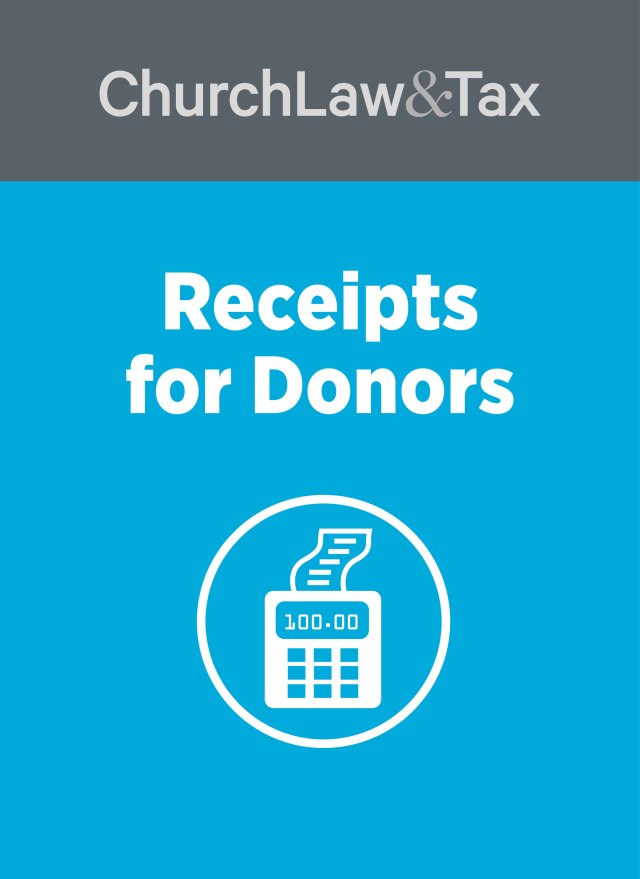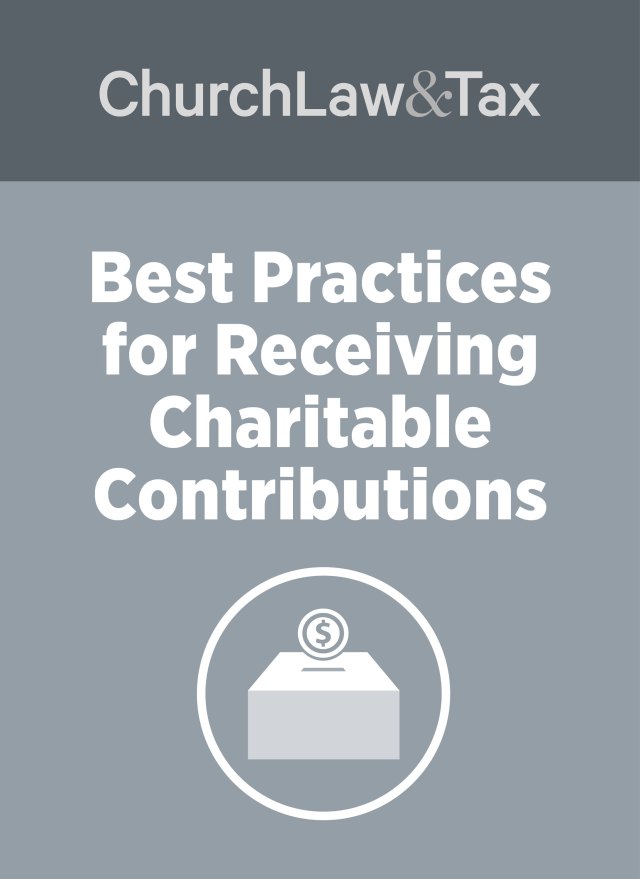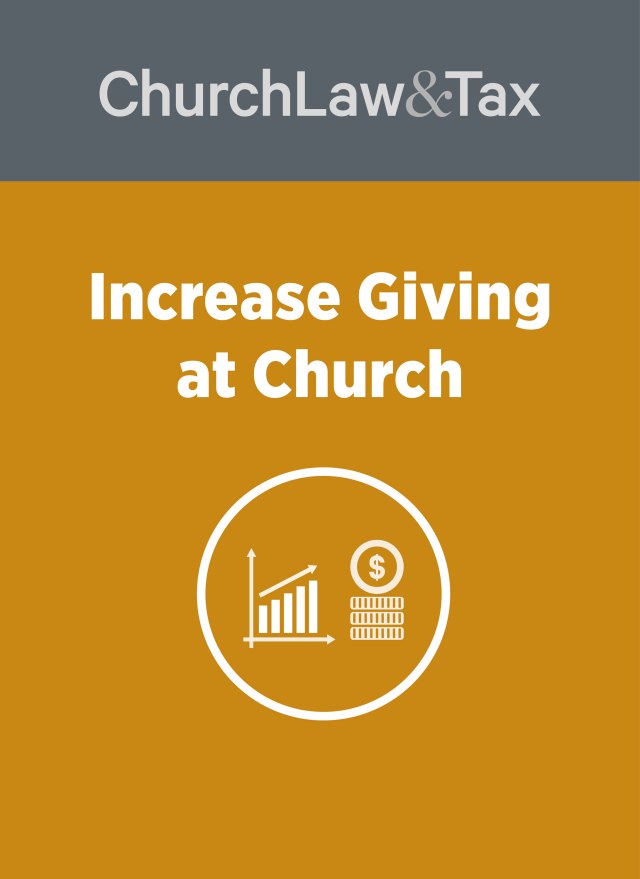Key point. Donors who make restricted contributions to a church may be legally entitled to a return of their contributions if not used for the donor-restricted purpose.
A federal district court in Arkansas allowed a group of 185,000 donors to move forward with a class-action lawsuit against a missions agency for allegedly violating its repeated assurance to donors that their restricted contributions would be spent “100%” for the designated purposes chosen by the donors.
Background
A US-based Christian missionary organization (the “defendant”) worked mostly in Asia. To fulfill its charitable purposes, the defendant solicits donations from donors across the world. Each year more than one million unique donations are made to the defendant from tens of thousands of donors in the United States. The defendant then works with its overseas agents to ensure that the donor-restricted money reaches its intended purposes in Asia (the “field”).
To maintain its ability to send sufficient funds to the field, the defendant arranges fundraising pitches in several mediums, including in-person solicitations at churches in the United States, on its own website, and through advertising efforts on social media and in various mailings and radio broadcasts.
Because the needs of the poor in Asia are so many, the defendant allows potential donors to specify for what purpose their field donations will be spent. For instance, donors who give online or in response to catalogs may direct their donations to any of 179 different donation categories. Donors make these designations by either checking boxes on order forms or, if ordering online, by adding the item (which lists the corresponding price) to their shopping cart. At other times, the defendant directly solicits donations for particular items, such as “emergency grams” sent in the wake of natural disasters and advertisements sent around the holidays asking for donations for blankets.
Funds not used as per donors’ wishes, claim donors
Several donors (the “donors”) sued the defendant in a federal district court in Arkansas, claiming that the defendant was not spending restricted contributions consistently with donors’ designations. The donors alleged that whether solicitations for contributions were made by the defendant or its agents at in-person church presentations, through catalog mailings, on its website, or in radio presentations, the defendant included a similar promise to its donors that 100 percent of the money given by donors would be sent to the field and spent in accordance with the donors’ wishes, rather than being applied to cover administrative costs or overhead. Moreover, every donor received receipts that contained a representation that “100% of all contributions designated for use on the mission field are sent to the mission field.”
The lawsuit centers on claims that, despite these numerous representations, the defendant did not, in fact, spend donor-restricted funds in accordance with the donors’ wishes or with the defendant’s representations. The parties agree that approximately $375 million in donations are at issue. As a result, the donors asserted a number of claims against the defendant, including Civil RICO (the Racketeer Influenced and Corrupt Organizations Act), fraud, unjust enrichment, and a state law claim. For its Civil RICO, fraud, and unjust enrichment claims, the donors attempted to bring a class-action lawsuit seeking monetary damages for about 185,000 donors nationwide who were affected by the alleged failure of the defendant to apply restricted contributions in the manner specified by donors.
The court certified the donors’ proposed nationwide class for the Civil RICO claim but limited the class for the fraud and unjust enrichment claims to donors residing in Arkansas.
What this means for churches
It is common for church members to make “donor-restricted” charitable contributions to their church specifying that their contributions be used for a specified purpose. What happens if a church board applies such contributions to some other purpose? Are there legal consequences for either the church or the church board? Consider the following rules based on a comprehensive review of all relevant precedent:
Restricted contributions—project not abandoned
Donors who make donor-restricted contributions to their church may have a legal right to a refund of their contributions if the church fails to use the contributions for the designated purpose. This may occur because the church board simply ignores donors’ designations and applies the funds to other uses. Or, it may occur because a church has failed to use the funds for the designated purpose within a reasonable amount of time.
But, so long as a specified project for which contributions are solicited has not been abandoned by a church, then donors who made contributions restricted for the specified project generally have no legal right to a refund of their contributions.
However, at some point, a church’s delay in using restricted funds for a specified purpose may be so substantial that it amounts to an abandonment of the project entitling donors to a refund of their donor-restricted contributions. As the Maine Supreme Court has noted: “Where no particular time is mentioned for the performance of a condition attached to a charitable grant, devise, or bequest, the law requires that it should be done in a reasonable time, to be determined from all the surrounding circumstances, and unreasonable delay may be considered as a refusal of the gift. . . . In light of . . . the fact that nearly forty years has passed . . . a reasonable amount of time has expired.” Estate of Champlin, 684 A.2d 798 (Me. 1996).
Restricted contributions—project abandoned
What if a donor contributes money for a designated church project (e.g., a new building) that the church abandons? Should the church refund contributions to donors who stipulated that their contributions were for the donor-restricted project? A number of possibilities exist, including the following:
Donors can be identified. If donors can be identified, they should be asked if they want their contributions to be returned or retained by the church and used for some other purpose. As one court noted: “Where a religious society raises a fund by subscription for a particular purpose, it cannot divert the funds to another purpose, and, if it abandons such purpose, the donors may reclaim their contributions.” Schmidt v. Catholic Diocese, 18 So.3d 814 (Miss. 2009).
A church should send a letter to donors who request a refund of a prior donor-restricted contribution informing them that (1) there may be tax consequences; (2) they may want to consider filing an amended tax return to remove any deduction claimed in previous years as a result of their restricted contribution; and (3) they should discuss the options with their tax advisor.
Some churches have issued donors a Form 1099-MISC under these circumstances to reduce the church’s risk of liability for aiding and abetting in the substantial understatement of tax. IRC 6701(b). But this approach presents two problems.
First, it assumes that the donor claimed a charitable contribution deduction for the donor-restricted gift and will not file an amended tax return. In fact, some donors did not get a tax deduction for their gifts because they could not itemize their deductions on Schedule A. Others received a “discounted” deduction because of the amount of their income (prior to 2018, high-income taxpayers only received a partial deduction for their charitable contributions). A church treasurer would have to inspect the actual tax return of each donor who requests a return of his or her contribution. Most church leaders consider such precautions excessive and unnecessary, especially for smaller contributions.
Second, Form 1099-MISC is not designed to report this kind of income. It is designed for nonemployee compensation. In what sense have these donors performed services for the church for which they are being compensated?
In summary, the best approach is for the church to inform donors who request a refund of a donor-restricted contribution to address the tax consequences with their tax advisor. They can either do nothing, report the amount of the returned contribution as “other income” on line 21 of Schedule 1 (Form 1040), or file an amended return for the year the restricted contribution was made, which removes the prior contribution from Schedule A. Keep in mind that amended returns can be made for only one of the previous three years.
Donors cannot be identified. A church may not be able to identify all donors who contributed to a specified project, such as a building fund. This is often true of donors who contributed small amounts, or donors who made anonymous cash offerings to a project. In some cases, donor-restricted contributions were made many years before the church abandoned its planned project, and there are no records that identify donors. Under these circumstances, the church has a variety of options.
One option is to address the matter in a membership meeting. Inform the membership of the amount of donor-restricted contributions that cannot be traced to specific donors, and ask the membership to adopt a resolution with regard to the disposition of the fund. Members often will authorize the transfer of the funds to the general fund. Note that this procedure is appropriate only for contributions that cannot be traced to specific donors. If donors can be identified, use the procedure described above.
Another option is to ask a court for authorization to transfer the building fund to another church fund. Most states have adopted the Uniform Prudent Management of Institutional Funds Act (UPMIFA), and this Act permits churches to ask a civil court for authorization to remove a restriction on charitable contributions to permanent endowment funds in some situations.
Other options are available. Churches should consult with an attorney when deciding how to dispose of donor-restricted funds if the specified purpose has been abandoned or is no longer feasible.
Some donors can be identified, and some cannot. In most cases, some donor-restricted contributions can be traced to specific donors, but some cannot. Both of the procedures summarized above may apply.
Key point. Some courts have ruled that a donor has no legal standing to enforce a donor-restricted gift to charity, but this doesn’t mean that a church or charity can ignore it. Some courts have ruled that the state attorney general can enforce a trust created by a donor-restricted gift, and so can any other person with a “special interest” in the trust. While this does not ordinarily include donors, their families, their heirs, or even beneficiaries of the gift or trust, it may include fiduciaries (such as a trustee of a written trust).
Class-action lawsuits
The case summarized above demonstrates another vulnerability of churches that divert donor-restricted funds to a restricted purpose—a class-action lawsuit by donors seeking a return of their contributions. There were 185,000 donors whose common interests were being advanced by the class action described in this case. About $375 million of donations was at issue. These numbers were inflated because a national ministry was involved. But the same principle can apply to church members seeking redress for a church’s violation of donors’ designations. 2018 U.S. Dist. LEXIS 155586; 2018 WL 4323938.




